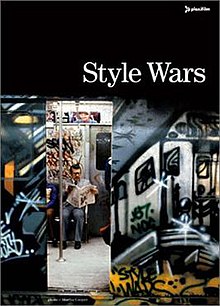
Fred Brathwaite, more popularly known as Fab 5 Freddy, is an American visual artist, filmmaker, and hip hop pioneer. He is considered one of the architects of the street art movement. Freddy emerged in New York's downtown underground creative scene in the late 1970s as a graffiti artist. He was the bridge between the burgeoning uptown rap scene and the downtown No Wave art scene. He gained wider recognition in 1981 when Debbie Harry rapped on the Blondie song "Rapture" that "Fab 5 Freddy told me everybody's fly." In the late 1980s, Freddy became the first host of the groundbreaking hip-hop music video show Yo! MTV Raps.

The Universal Zulu Nation is an international hip hop awareness group formed by and formerly led by hip hop artist Afrika Bambaataa.

Beat Street is a 1984 American dance drama film featuring New York City hip hop culture of the early 1980s. Set in the South Bronx, the film follows the lives of a pair of brothers and their group of friends, all of whom are devoted to various elements of early hip hop culture, including breakdancing, DJing and graffiti.
Richard Colón, better known by his stage name Crazy Legs, is an American b-boy who was featured in the earliest stories on hip hop dancing to appear in mainstream press, and as president of the Rock Steady Crew brought the form to London and Paris in 1983. Today he is also involved in community outreach, dance instruction, and dance theater productions. He has appearanced in fiction films and documentaries. Crazy Legs is current president of the Rock Steady Crew.
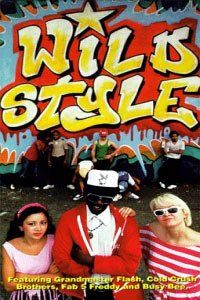
Wild Style is a 1983 American hip hop film directed and produced by Charlie Ahearn. Regarded as the first hip hop motion picture, it includes appearances by seminal figures such as Fab Five Freddy, Lee Quiñones, Lady Pink, The Rock Steady Crew, The Cold Crush Brothers, Queen Lisa Lee of Zulu Nation, Grandmaster Flash and ZEPHYR.

Aaron Bernard Tyler, better known by his stage name MC Eiht, is an American rapper. Many of his songs are based on his life in Compton. His stage name was partly inspired by the numeral in KRS-One's name. He chose Eiht for its links to "hood culture", including Olde English 800 and .38 caliber firearms. He is the de facto leader of West Coast hip hop group Compton's Most Wanted, which also included fellow Compton-based rappers Boom Bam, The Unknown DJ, Tha Chill, DJ Mike T, DJ Slip and Ant Capone. He is also known for his role as A-Wax in the 1993 film Menace II Society, as well as playing the character Ryder in the 2004 video game Grand Theft Auto: San Andreas.

David Marvin Blake, better known by his stage names DJ Quik or Da Quiksta, is an American rapper, record producer and DJ, known for his production in the G-funk style of West Coast hip-hop. Blake has collaborated with Snoop Dogg, Kurupt, Tupac, Chingy, R. Kelly and Shaquille O'Neal, among others. Blake's stage name reflects his ability to produce songs in a short period of time. Some of his top songs include "Dollaz + Sense", "Tonite", "Born and Raised in Compton" and "Jus Lyke Compton."

ZEPHYR, born Andrew Witten, is a graffiti artist, lecturer and author from New York City. He began writing graffiti in 1975 using the name "Zephyr" in 1977. He is considered a graffiti "elder", who along with Futura 2000, Blade, PHASE 2, CASH, Lady Pink and TAKI 183 invented styles and standards which are still in use.

Michael "Iz the Wiz" Martin was one of the most prominent graffiti writers of the New York graffiti movement of the late 1970s and early 1980s.
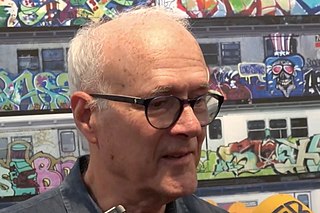
Henry Chalfant is an American photographer and videographer most notable for his work on graffiti, breakdance, and hip hop culture.
Robert "Bob" Khaleel, better known by his stage name Bronx Style Bob, is an American rapper from the Bronx, New York City.

Breakdancing, also called b-boying, b-girling or breaking, is a style of street dance developed by African American and Puerto Rican communities in The Bronx, New York City, United States.
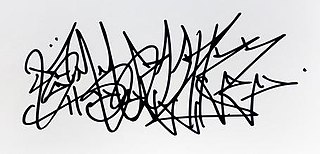
Rammellzee was a visual artist, gothic futurist "graffiti writer", painter, performance artist, art theoretician, sculptor and a hip-hop musician from New York City, who has been cited as "instrumental in introducing elements of the avant-garde into hip-hop culture".
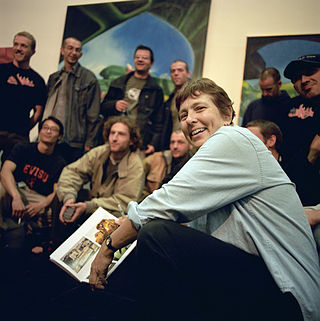
Martha Cooper is an American photojournalist. She worked as a staff photographer for the New York Post during the 1970s. She is best known for documenting the New York City graffiti scene of the 1970s and 1980s.

Donald Joseph White, "DONDI" was an American graffiti artist.
Charlie Ahearn is an American film maker living in New York City. Although predominantly involved in film and video art production, he is also known for his work as an author, freelance writer, member of Colab, and radio host. He is married to the painter Jane Dickson and is the twin brother to the sculptor John Ahearn.

Lance Taylor, also known as Afrika Bambaataa, is an American DJ, rapper, and producer from the South Bronx, New York. He is notable for releasing a series of genre-defining electro tracks in the 1980s that influenced the development of Hip Hop culture. Afrika Bambaataa is one of the originators of breakbeat DJing.
Rock Steady Crew is an American breaking and hip hop group which has become a franchise for multiple groups in other locations. The group's 1983 international hit song "(Hey You) The Rock Steady Crew" peaked at No. 6 on the UK Singles Chart, and reached the top 10 in many European countries. Members of Rock Steady Crew featured in the films Flashdance and Beat Street, which ignited international interest in the b-boy subculture.

"Beat Bop" is a song by American hip-hop artists Rammellzee and K-Rob. It was produced and arranged by Jean-Michel Basquiat. Initially, it was made as a test pressing by Tartown Inc. in 1983. That same year, the song was released as a single by Profile Records, and featured in the hip-hop documentary film Style Wars (1983).

Cey Adams is an American visual artist, graphic designer and author. He was the founding creative director of Def Jam Recordings and is known for his work with Beastie Boys, Public Enemy, LL Cool J, Jay-Z, and Mary J. Blige. He has been described as "legendary" for his work in hip-hop graphic design.
